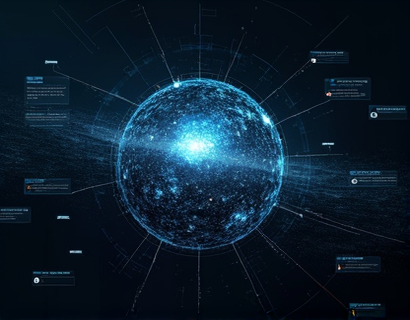AI-Powered Calculus Learning: Specialized Insights and Child-Friendly Access for Students and Educators
In the rapidly evolving landscape of education, artificial intelligence (AI) is transforming the way students and educators approach complex subjects like calculus. The integration of AI-powered platforms into learning environments offers specialized insights and tailored resources that cater to the unique needs of students, educators, and young learners. This article explores the innovative features of AI chat interfaces designed to provide accurate and verified information about calculus, ensuring a safe and engaging experience for all users.
The Importance of Calculus in Education
Calculus is a fundamental branch of mathematics that deals with rates of change and the accumulation of quantities. It is essential for students pursuing careers in science, technology, engineering, and mathematics (STEM). Understanding calculus not only enhances problem-solving skills but also fosters critical thinking and analytical abilities. However, many students find calculus challenging, leading to a need for accessible resources that can simplify complex concepts.
AI Chat Interfaces: A New Era of Learning
AI chat interfaces represent a significant advancement in educational technology. These platforms utilize natural language processing and machine learning algorithms to interact with users in real-time, providing personalized assistance and information. For students and educators, this means having access to a wealth of knowledge at their fingertips, making learning more interactive and engaging.
Specialized Insights for Students
One of the key benefits of AI-powered calculus learning platforms is the ability to offer specialized insights tailored to individual learning needs. Students can ask questions about specific calculus topics, such as derivatives, integrals, and limits, and receive instant, accurate responses. This immediate feedback helps reinforce understanding and allows students to explore concepts at their own pace.
Industry Knowledge for Educators
Educators also benefit from AI chat interfaces, as they can access industry knowledge and teaching resources that enhance their instructional methods. By staying informed about the latest developments in calculus education, teachers can better support their students and create a more effective learning environment. AI platforms can provide lesson plans, teaching strategies, and assessment tools that align with current educational standards.
Child-Friendly Access: Ensuring Safety and Engagement
When it comes to young learners, safety and accessibility are paramount. AI chat platforms designed for children prioritize content verification and age-appropriate language, ensuring that students can explore calculus concepts without encountering inappropriate material. This child-friendly approach fosters a safe learning environment where students feel comfortable asking questions and seeking help.
Content Verification for Accuracy
One of the standout features of AI-powered calculus learning platforms is their commitment to content verification. Information provided by the AI is sourced from reputable educational materials and verified for accuracy. This ensures that students receive reliable information, which is crucial for building a strong foundation in calculus. By eliminating misinformation, these platforms empower students to learn confidently and effectively.
Interactive Learning Experiences
AI chat interfaces also offer interactive learning experiences that engage students in a fun and meaningful way. Through gamification, quizzes, and problem-solving challenges, students can apply their calculus knowledge in practical scenarios. This hands-on approach not only reinforces learning but also makes the subject more enjoyable, encouraging students to explore further.
Enhancing Understanding Through Personalized Learning
Every student learns differently, and AI-powered platforms recognize this by providing personalized learning experiences. By analyzing user interactions and performance, these systems can adapt their responses and resources to meet individual needs. For example, if a student struggles with a particular calculus concept, the AI can offer additional explanations, examples, and practice problems tailored to that topic.
Building Confidence in Mathematics
As students engage with AI chat interfaces, they build confidence in their mathematical abilities. The supportive environment created by these platforms encourages students to ask questions and seek clarification without fear of judgment. This increased confidence can lead to improved performance in calculus and other mathematical subjects, ultimately contributing to a more positive attitude toward learning.
Supporting Diverse Learning Styles
AI-powered calculus learning platforms are designed to support diverse learning styles, accommodating visual, auditory, and kinesthetic learners. For instance, visual learners can benefit from graphical representations of calculus concepts, while auditory learners can listen to explanations and discussions. Kinesthetic learners can engage with interactive simulations and hands-on activities that bring calculus to life.
Resources for Visual Learners
Visual learners often grasp concepts more effectively when they can see them represented graphically. AI platforms can provide visual aids, such as graphs, charts, and animations, to illustrate calculus principles. These resources help students visualize complex ideas, making them easier to understand and apply.
Resources for Auditory Learners
For auditory learners, AI chat interfaces can offer audio explanations and discussions about calculus topics. By listening to expert insights and engaging in conversations with the AI, these students can reinforce their understanding through auditory processing. This approach caters to their preferred learning style and enhances retention of information.
Resources for Kinesthetic Learners
Kinesthetic learners thrive on hands-on experiences. AI platforms can provide interactive simulations and activities that allow these students to experiment with calculus concepts in a practical context. By engaging in problem-solving challenges and real-world applications, kinesthetic learners can deepen their understanding of calculus while enjoying the learning process.
Encouraging Collaboration Among Students
AI-powered calculus learning platforms also promote collaboration among students. By facilitating group discussions and collaborative problem-solving, these platforms create opportunities for peer-to-peer learning. Students can share insights, ask questions, and work together to tackle challenging calculus problems, fostering a sense of community and teamwork.
Peer Support and Learning Communities
Through AI chat interfaces, students can connect with their peers and form learning communities focused on calculus. These communities provide a space for students to support one another, share resources, and collaborate on projects. By engaging with their peers, students can gain new perspectives and enhance their understanding of calculus concepts.
Integrating AI into the Classroom
As educators recognize the benefits of AI-powered calculus learning platforms, many are integrating these tools into their classrooms. By incorporating AI chat interfaces into their teaching strategies, educators can enhance student engagement and improve learning outcomes. This integration allows teachers to leverage technology to create a more dynamic and interactive learning environment.
Professional Development for Educators
To effectively integrate AI into the classroom, educators can participate in professional development programs that focus on technology in education. These programs provide teachers with the skills and knowledge needed to utilize AI-powered platforms effectively. By staying informed about the latest educational technologies, educators can better support their students and enhance their teaching practices.
The Future of AI in Calculus Education
The future of AI in calculus education is promising, with ongoing advancements in technology and pedagogy. As AI continues to evolve, we can expect even more innovative features and capabilities that enhance the learning experience for students and educators alike. From personalized learning pathways to advanced analytics that track student progress, the potential for AI in education is limitless.
Continuous Improvement and Adaptation
AI-powered platforms are designed to learn and adapt over time. By analyzing user interactions and feedback, these systems can continuously improve their responses and resources. This adaptability ensures that students receive the most relevant and effective support as they navigate their calculus learning journey.
Conclusion
AI-powered calculus learning platforms are revolutionizing the way students and educators approach this complex subject. By providing specialized insights, child-friendly access, and personalized learning experiences, these platforms empower students to explore calculus with confidence. As technology continues to advance, the integration of AI in education will play a crucial role in shaping the future of learning, making calculus more accessible and engaging for all.









































